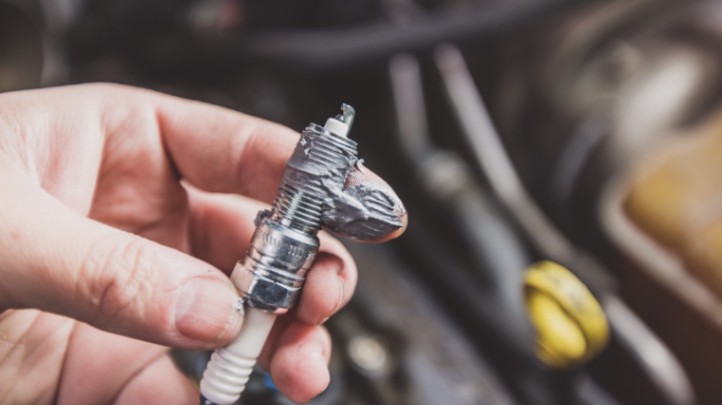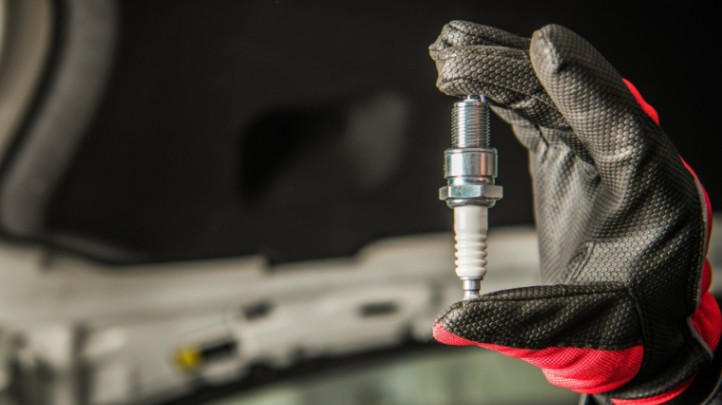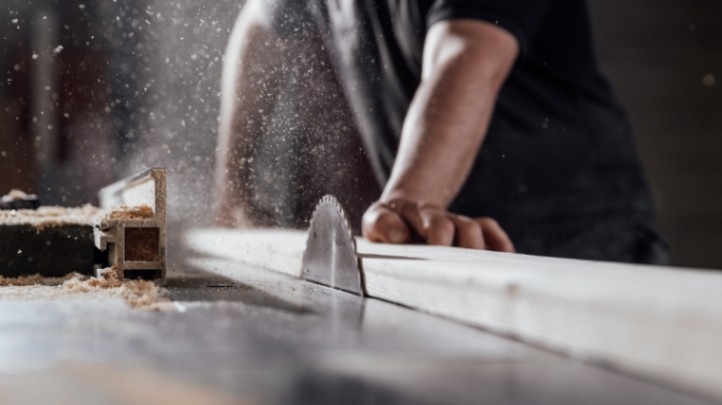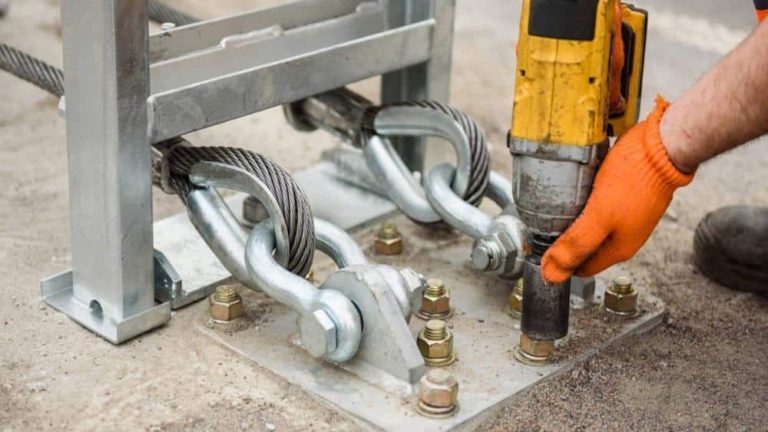Heat guns are an incredibly versatile tool that can be used for various tasks, from paint stripping to plastic welding. With so many different heat guns available, it is difficult to know which one is right for your project. This article will explore the different types of heat guns and help you choose the best one for your specific needs.
Also Read: Best Heat Gun To Remove Stickers: Reviews, Guide
Best Heat Gun To Remove Stickers: Reviews, Guide
1. Overview of the article
When it comes to choosing the right type of heat gun, there is a multitude of options available. Each type of heat gun has unique strengths and weaknesses, making it essential to carefully consider your specific needs before deciding. This article will explore the different types of heat guns and discuss the importance of choosing the right one for your needs.
Heat guns are versatile tools that can be used for various applications, including stripping paint, thawing pipes, welding plastics, and even cooking. However, the wide range of options available can make it challenging to know which type of heat gun to choose. Factors such as the size and power output, as well as the specific tasks you plan to use it for, must be considered.
Importance of choosing the right type of heat gun
In conclusion, understanding the different types of heat guns and their uses is essential for choosing the right tool for your specific needs. By carefully considering the task and features of each type of heat gun, you can ensure that you choose the right one for your project and achieve the desired results safely and efficiently.

2. Electric Heat Guns
Description of electric heat guns
Electric heat guns are a popular and versatile tool that can be used for many applications. They convert electricity into heat, which is then directed through a nozzle to a specific area. In this section, we will explore the features of electric heat guns, their uses, and their advantages and disadvantages compared to other types of heat guns.
The Usage of Electric Heat Guns
Electric heat guns are versatile tools that can be used for various purposes. They use a high-powered electric motor to force hot air through a nozzle, which can then be directed at the target area. This hot air can be used for many tasks, from removing paint and adhesives to welding plastics and soldering electronics.
They can also be used for tasks such as shrinking tubing, thawing frozen pipes, and drying wet surfaces. However, the purpose of electric heat guns continues beyond there. With so many different uses, it’s no wonder electric heat guns are a popular tool in the arsenal of many professionals and DIY enthusiasts.
But with so many options available, choosing the right type of electric heat gun for your specific needs is essential. Let’s explore the different factors to consider when selecting an electric heat gun, so you can make an informed decision and get the most out of this versatile tool.
Pros and cons of electric heat guns
Regarding pros and cons, electric heat guns have several advantages over other heat guns. They are generally more affordable, easier to use, and require less maintenance. However, they also have some disadvantages. For example, they can take longer to heat up and may not be as powerful as other heat guns, making them unsuitable for some tasks.
Examples of electric heat guns
There are many examples of electric heat guns on the market, each with unique features and specifications. Some popular models include the DeWalt D26950, the Wagner HT1000, and the Porter-Cable PC1500HG. These models vary in price and features, allowing consumers to choose the best option for their needs.
Comparison with other types of heat guns
Compared to other heat guns, such as gas-powered and battery-powered, electric heat guns offer a balance of affordability and functionality. While they may not be as powerful as gas-powered heat guns, they are generally more reliable and require less maintenance. Additionally, they are more convenient than battery-powered heat guns, which require frequent recharging.
In conclusion, electric heat guns are a popular and versatile tool with various uses and benefits. They are easy to use and maintain, making them an excellent option for professional and DIY projects. However, their limitations must also be considered, and there may be better options for some tasks. By carefully considering your specific needs and the features of each type of heat gun, you can choose the best tool for your project and achieve the desired results efficiently and safely.
FAQs related to electric heat guns
- Can electric heat guns be used for shrink-wrapping?
- The answer is yes. Electric heat guns are often used for this purpose because they produce a steady stream of hot air. However, it’s vital to ensure that the heat gun is set to the appropriate temperature and that the shrink-wrap material is suitable for heat guns. Otherwise, you may end up with a melted mess on your hands.
- Are electric heat guns suitable for welding plastic?
- The answer is, once again, yes. Electric heat guns can be used for various plastic welding applications, such as repairing cracked plastic parts or sealing plastic pipes. However, it’s essential to choose the appropriate nozzle for the job to ensure that the heat is applied evenly and to avoid overheating the plastic, which can cause it to melt.
- Are electric heat guns suitable for welding plastic?
- The answer is, once again, yes. Electric heat guns can be used for various plastic welding applications, such as repairing cracked plastic parts or sealing plastic pipes. However, it’s essential to choose the appropriate nozzle for the job to ensure that the heat is applied evenly and to avoid overheating the plastic, which can cause it to melt.

3. Gas-Powered Heat Guns
Gas-powered heat guns are a type of tool that is used to generate heat using gas as fuel. They are commonly used in various industries due to their portability and efficiency in heating large areas quickly. This section will discuss gas-powered heat guns’ features, uses advantages, and disadvantages.
Gas-powered heat guns are handheld devices powered by propane or butane. They work by igniting the gas, producing a flame through a nozzle. This flame produces heat, which is used for various purposes, such as welding, soldering, and bending plastics.
The uses of Gas-Powered Heat Guns
Gas-powered heat guns are powerful tools that are widely used in a range of industries. Gas-powered heat guns make them highly portable and ideal for use in remote or outdoor environments. Unlike electric heat guns, which rely on electricity, gas-powered heat guns are powered by propane or butane gas.
One of the main advantages of gas-powered heat guns is their high power output. They can reach temperatures up to 1,000 degrees Fahrenheit, making them ideal for paint stripping, welding, and soldering. Additionally, they are highly efficient, allowing you to complete jobs quickly and effectively.
When using a gas-powered heat gun, it’s essential to take safety precautions. Because they produce a large amount of heat, they can be dangerous if not used properly. It’s essential to wear protective gear, such as gloves and safety glasses, and to follow all manufacturer instructions.
Overall, gas-powered heat guns are versatile tools that can be used for a variety of applications. Whether you’re a professional tradesperson or a DIY enthusiast, they are a valuable addition to any tool kit. With the proper knowledge and safety precautions, you can use a gas-powered heat gun to tackle even the most challenging projects.
Pros and cons of gas-powered heat guns
One of the main advantages of gas-powered heat guns is their portability, as they do not require a power source. This makes them ideal for use in outdoor environments or areas where electricity is unavailable. Gas-powered heat guns are also versatile, as they can be used for various applications.
However, gas-powered heat guns do have some drawbacks. They can be expensive, and the cost of fuel can also add up over time. They are also less precise than other heat guns, and the heat output can be challenging to control. Additionally, gas-powered heat guns require more maintenance compared to electric heat guns.
Examples of gas-powered heat guns
Some examples of gas-powered heat guns include the Master Appliance UT-100Si Ultratorch, the Wagner 0503008 HT1000, and the Bernzomatic TS8000. Compared to other heat guns, gas-powered heat guns tend to be more powerful and produce higher temperatures.
Comparison with other types of heat guns
In conclusion, gas-powered heat guns are a powerful and versatile tool widely used in various industries. They have their advantages and disadvantages, but they are a good option for those requiring a portable heat source that can be used for various applications. When choosing a gas-powered heat gun, it is crucial to consider your specific needs and the features of each model to find the best option.
FAQs related to gas-powered heat guns
- Are gas-powered heat guns more powerful than electric heat guns?
- One of the main advantages of gas-powered heat guns is their high heat output. They can reach much higher temperatures than electric heat guns, making them ideal for tasks that require a lot of heat, such as welding and soldering. However, it’s worth noting that gas-powered heat guns can also be more challenging to control and may need to be more suitable for more delicate tasks.
- What types of fuel can be used in gas-powered heat guns?
- Most gas-powered heat guns run on propane or butane gas, which can be easily found at hardware stores or online. Some models may also be compatible with other fuel types, such as natural gas or acetylene. However, checking the manufacturer’s instructions before using any other fuel type is essential.
- How long does the fuel last in a gas-powered heat gun?
- The time that the fuel lasts in a gas-powered heat gun depends on various factors, including the size of the gas canister, the heat output of the heat gun, and how often it is used. A small canister of gas can last several hours of continuous use. In contrast, more oversized canisters can last for several days. However, keeping a spare gas canister on hand is always a good idea, especially for longer projects.
In conclusion, gas-powered heat guns are powerful and versatile tools that can be used for various tasks. While they may not be suitable for every job, they are an excellent choice for tasks that require high heat output and portability. If you are considering purchasing a gas-powered heat gun, be sure to research and choose a model suitable for your specific needs.

4. Infrared Heat Guns
Infrared heat guns use infrared radiation to generate heat. Unlike other types of heat guns, which typically blow hot air onto a surface, infrared heat guns emit energy that is absorbed by the surface and converted into heat. This means that infrared heat guns can be used for various applications, from drying paint to softening adhesives.
The Usage of Infrared Heat Guns
Infrared heat guns are an innovative tool that has gained popularity recently due to their unique capabilities. Unlike traditional heat guns, which use a stream of hot air to create heat, infrared heat guns use a beam of infrared radiation. This makes them highly efficient and precise, allowing for greater control and accuracy in various applications.
One of the critical advantages of infrared heat guns is their ability to measure surface temperature without actually making contact. This makes them ideal for use in situations where the surface may be delicate or where contact could damage the surface. They are also highly effective at penetrating through surfaces to reach deeper layers, making them ideal for thawing frozen pipes or drying wet surfaces.
Infrared heat guns are commonly used in industrial applications, such as automotive or aerospace industries, where precision and accuracy are critical. They can also be used in various other industries, including construction and food service.
When choosing an infrared heat gun, it’s essential to consider factors such as temperature range, accuracy, and durability. It’s also essential to follow all safety precautions, such as wearing protective gear and avoiding pointing the gun directly at people or animals.
Overall, infrared heat guns are versatile and efficient tools that can be used for various applications. Whether you’re a professional tradesperson or a DIY enthusiast, they are a valuable addition to any tool kit. With the proper knowledge and safety precautions, you can use an infrared heat gun to tackle even the most challenging projects quickly and precisely.
Pros and Cons of Infrared Heat Guns
One of the most significant advantages of infrared heat guns is their efficiency. They can generate heat quickly and can be used to target specific areas. Additionally, they are relatively quiet compared to other types of heat guns. On the other hand, one of the most significant disadvantages of infrared heat guns is their cost. They tend to be more expensive than other heat guns and may only be cost-effective for some.
Examples of Infrared Heat Guns
Some of the most popular brands of infrared heat guns include Milwaukee, DeWalt, and Bosch. Each of these brands offers various models with different features and capabilities. For example, the Milwaukee M12 Cordless Infrared Temp-Gun offers a temperature range of -22°F to 1472°F and a 12:1 distance-to-spot ratio, while the Bosch GHI 220V Professional Infrared Heat Gun has a temperature range of 50°C to 630°C and a 10:1 distance-to-spot ratio.
Comparison with Other Types of Heat Guns
Infrared heat guns offer several advantages compared to other types of heat guns. For example, they are more efficient, quickly generate heat, and are relatively quiet. They can also be used for a broader range of applications. However, they are also more expensive than other heat guns and may only be cost-effective for some.
In conclusion, infrared heat guns are a powerful and versatile tool that can be used for many applications. Whether a professional contractor or a DIY enthusiast, an infrared heat gun can help you get the job done quickly and efficiently. Just be sure to weigh the pros and cons before purchasing to ensure it’s the right choice for your needs.
FAQs related to infrared heat guns
- How do infrared heat guns work?
- Infrared heat guns use infrared radiation to measure the temperature of an object or surface. The gun emits a beam of infrared radiation, which bounces off the object and returns to the gun’s sensor. The gun then calculates the temperature based on the amount of radiation absorbed by the object.
- Can infrared heat guns be used to thaw frozen pipes?
- Yes, infrared heat guns can be used to thaw frozen pipes. By heating the pipes with infrared radiation, the ice will start to melt, and the water will start to flow again. However, it’s essential to be careful when using an infrared heat gun to thaw pipes, as they can get extremely hot and cause damage if not used properly.
- Are infrared heat guns safe to use on sensitive materials like fabric?
- This is a tricky question. Infrared heat guns can be used on fabrics, but caution is essential. The high temperatures of infrared radiation can cause some fabrics to melt or burn. It’s best to test the heat gun on a small, inconspicuous area of the fabric before applying it to a larger area. Additionally, it’s essential to keep the heat gun moving and leave it in one spot for a short time.
In conclusion, infrared heat guns can be a helpful tool for measuring temperature and thawing frozen pipes. However, it’s essential to use them with caution and to be aware of their limitations. Suppose you have further questions about using an infrared heat gun. In that case, it’s best to consult the manufacturer’s instructions or seek the advice of a professional.
5. FAQs related to heat guns in general
Heat guns are versatile tools that can be used for a wide range of applications. However, there are some common questions that people have about these devices. Here are some frequently asked questions about heat guns:
What are some common uses for heat guns?
Heat guns can be used for various tasks, including paint stripping, soldering, plastic welding, thawing frozen pipes, and shaping plastics. They are also helpful for tasks that require controlled heating, such as shrinking wrap and drying wet surfaces.
Can heat guns be used for removing wallpaper?
Yes, heat guns are commonly used for removing wallpaper. Applying heat to the wallpaper can loosen the adhesive, making it easier to remove. However, it’s essential to be careful when using a heat gun for this task, as excessive heat can damage the drywall underneath.
How do I maintain my heat gun?
Proper maintenance is vital for the longevity and effectiveness of your heat gun. To maintain your heat gun, you should regularly clean the air filters and ensure the heating element is free from debris. It’s also essential to store your heat gun in a dry, cool place away from direct sunlight.
In conclusion, heat guns are versatile tools that can be used for various applications, including paint stripping, soldering, plastic welding, and thawing frozen pipes. They are also helpful in removing wallpaper, but it’s essential to avoid damaging the drywall underneath. Regular cleaning and storage in a dry, cool place are essential to maintain your heat gun. Suppose you have any further questions or concerns about using a heat gun. In that case, it’s best to consult the manufacturer’s instructions or seek the advice of a professional.
6. Conclusion
In conclusion, several types of heat guns are available, each with unique features and applications. From cordless to dual-temperature models, it’s essential to consider the specific needs of your project when choosing a heat gun.
Factors to consider when choosing a heat gun
- When choosing a heat gun, there are several important factors to consider. One of the most important factors is the temperature range of the heat gun. Depending on the task, you may need a heat gun that can quickly reach a high temperature or maintain a lower temperature for an extended period.
- Another factor to consider is the wattage of the heat gun. Wattage will determine how quickly the heat gun can reach the desired temperature and how long it can maintain that temperature. It’s essential to choose a heat gun with the appropriate wattage for your specific needs.
The airflow of the heat gun is also an important consideration. A heat gun with high airflow will disperse heat more quickly, making it ideal for larger projects. However, a heat gun with lower airflow may be more suitable for smaller, more delicate projects. - Size and weight are also important factors to consider. A smaller, lighter heat gun may be more portable and easier to use in tight spaces. In contrast, a larger, heavier heat gun may be more powerful and suitable for larger projects.
- Finally, it’s essential to consider safety features when choosing a heat gun. Look for a heat gun with overheating protection and a cool-down mode to prevent overheating and potential hazards.
By carefully considering these factors, you can choose a heat gun that is both safe and effective for your specific needs. Remember to choose an appropriate heat gun for the task, and always follow safety guidelines to ensure a successful and safe project.
Final thoughts
In conclusion, choosing the right heat gun for your project requires careful consideration of several vital factors. With so many different types and models available, it’s essential to determine your project’s specific needs and choose a heat gun that can meet those needs.
Whether you’re working on a DIY project or a professional job, the right heat gun can make all the difference in the success of your project. By considering the temperature range, wattage, airflow, size and weight, and safety features of your heat gun, you can ensure a safe and successful project.





